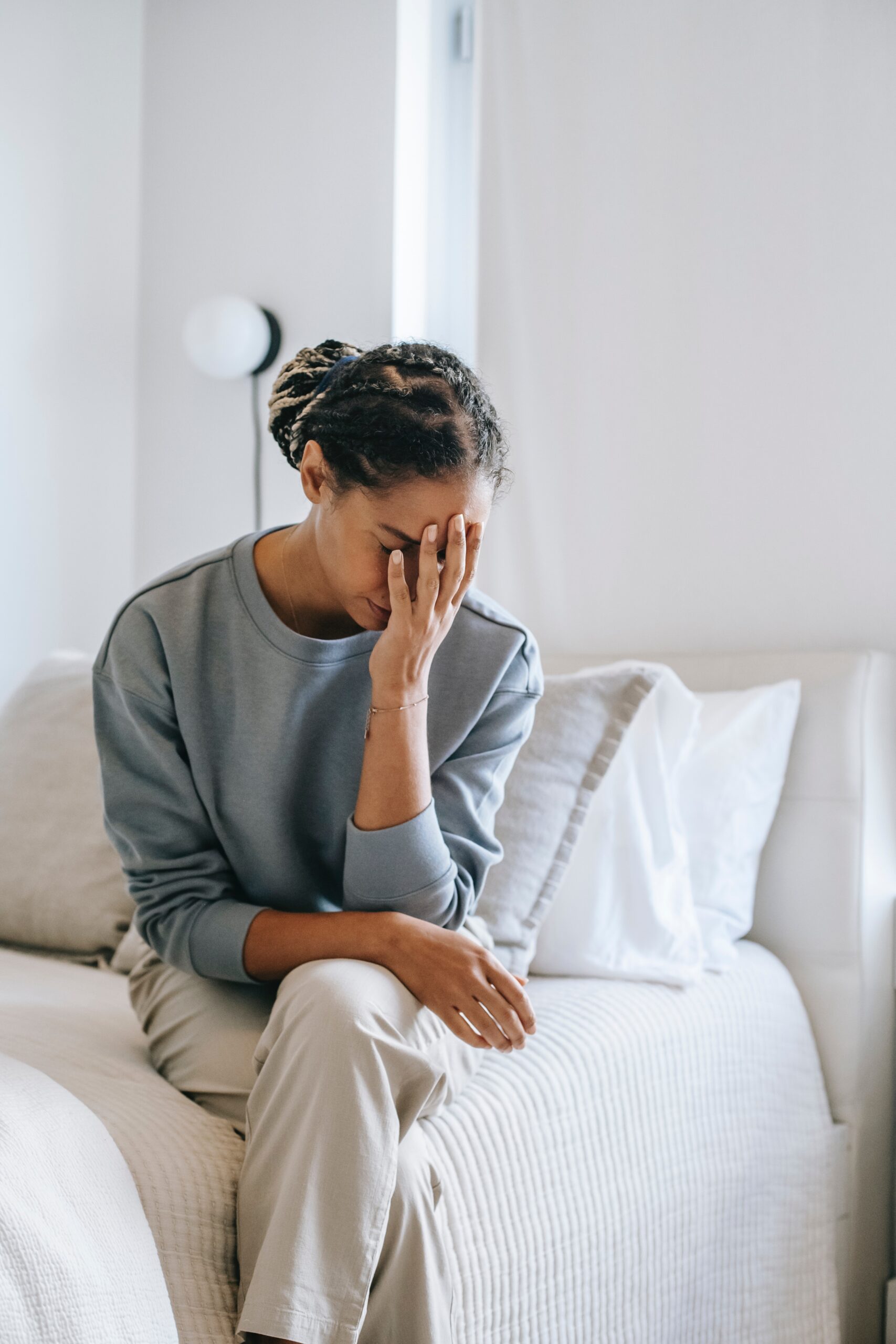What is Anxiety?
Anxiety is a feeling or emotion that includes worried thoughts and physical changes like tension, blood pressure changes, and increases in heart rate.
Anxiety can be differentiated from fear. Fear is an appropriate, momentary, present-focused response to a clear and specific threat. Anxiety is focused on responding to a future suspected threat and is long-lasting. This threat is often vague as opposed to specific. For example, you may experience fear when you are on the edge of a cliff and think you are in danger of falling off. You may feel anxiety about “something bad” happening if you were to go on a hike.
What is an Anxiety Disorder?
It is important to remember that some anxiety is normal. Everyone feels anxious sometimes. You may worry about your children, your job, your relationships, or your health. Anxiety disorders may be present when anxiety is more than a temporary worry or concern. You may have an anxiety disorder if anxiety does not go away and may even get worse over time. If the symptoms of anxiety also interfere in your life at school, home, work or in your relationships, then an anxiety disorder is more likely.

What are common Anxiety Disorders?
Common anxiety disorders include:
- Generalized Anxiety Disorder (GAD)
- Specific Phobia
- Panic Disorder
- Agoraphobia
- Social Anxiety Disorder
- Separation Anxiety Disorder
- Selective Mutism
What is Generalized Anxiety Disorder (GAD)?
Generalized anxiety disorder (GAD) involves continuous and ecessive worry that interferes with your daily life. Physical symptoms like restlessness, feeling on edge, fatigue, difficulty concentrating, difficulty sleeping, and muscle tension often accompany the worry thoughts. Worry or concern in GAD typically centers on everyday things like health, family, job tasks and performance, appointments, chores, etc.
What is Specific Phobia?
Specific phobias are excessive and ongoing fear of a specific situation, activity, or object. For example, flying, speaking in public, or spiders. The fear creates significant distress and often leads to people avoiding what they fear, even if they realize the fear is inhibiting their life


What is Panic Disorder?
Panic disorder includes the core symptom of recurrent panic attacks. A panic attack is experienced as an overwhelming combination of physical and psychological distress. Someone experiencing a panic attack may have some combination of the following symptoms:
- Palpitations or rapid heart rate
- Sweating
- Trembling or shaking
- Feeling short of break of like you can not breathe
- Chest pain
- Feeling you are choking
- Dizziness, light-headed or faint
- Numness or tingling
- Chills or hot flashes
- Nausea
- Abdominal pains
- Feeling detached
- Fear of losing control
- Fear of dying
What is Agoraphobia?
Agoraphobia occurs when someone is afraid of being in a situation where escape may be difficult or help might not be available if a panic attack occurs. This fear is excessive, lasts six months or more, and interferes with functioning. Typically an individual with agoraphobia avoids the situations that elicit this intense fear.
What is Social Anxiety Disorder?
Social anxiety disorder is significant anxiety about being rejected, judged, humiliated or embarrased in social situations. Social interactions are typically avoided or endured with significant distress.
What is Separation Anxiety Disorder?
Separation anxiety disorder occurs in both children and adults. An individual will experiences excessive fear or anxiety about being separated from the person to whom they feel closest. Physical symtpoms of distress are common as well as persistant worry about losing this person.
What is Seletive Mutism?
Selecgive mutism occurs when chidlren do not speak in some social situations where they are expected to speak and yet are able to speak in other situations. For example, they may speak at home, but not at school, or with parents but not grandparents.


Treatment for Anxiety
Like many disorders, anxiety disorders are typically treated with psychotherapy and/or medication.
Cognitive Behavioral Therapy (CBT) is a research based treatment approach for anxiety. Specifically, exposure therapy is a CBT method that is effective in treating anxiety. Exposure therapy works with people to help them gradually confront their fears and engage in the activities and situations they have been avoiding. Learning new skills and coping mechanisms is an important part of this approach, so that people feel they have new ways of managing their fears.
Acceptance and Commitment Therapy (ACT) is another treatment approach for anxiety. It is also exposure based but focuses on the individual’s values and goals as motivation for engaging in life even when anxiety is present.
Parents of Children and Adolescents with Anxiety
Having a child with anxiety can be a very stressful situation for parents. It is painful to watch your child suffer. The natural tendency of most parents is to want to step in and rescue children from discomfort, or allow them to avoid situations that create distress.
Parents may accidentally make anxiety worse by trying to protect their children in these ways. They may inadvertently be reinforcing the idea that their children are not able to manage hard situations and face their fears. Instead, it can be helpful for parents to teach their children how to deal with anxiety as it comes up and let them know they will be supported in this process.
It can be important that parents seek out their own support. This might include individual therapy, parent guidance, education, or group support. Building and fostering your own support network is important. Reach out to us today to see how we may be able to help.

Contact Us Today to Talk
We would love to find out what we can help you with. Call 203-745-0733 or email for consultation.

